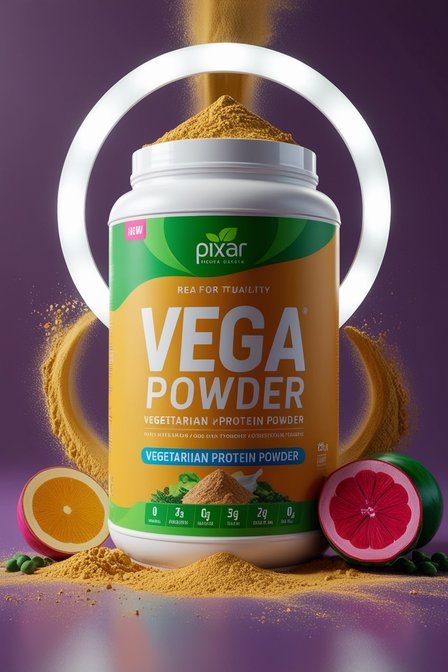Understanding Whey Protein
Whey protein has gained immense popularity over the years, particularly among athletes, bodybuilders, and health enthusiasts. But what exactly is whey protein, and what is it made of? To understand whey protein, we first need to look at its origins and the components that make it a powerhouse of nutrition.
The Origins of Whey Protein
Whey protein is a by-product of the cheese-making process. It is derived from milk, which contains two main types of proteins: casein and whey. When milk is coagulated during cheese production, it separates into solid curds and liquid whey. The curds are used to make cheese, while the whey is collected and processed to create whey protein.
Composition of Whey Protein
Whey protein is a complex substance made up of several components, each contributing to its nutritional profile and functional properties. The primary constituents of whey protein include:
- Proteins: The most significant component of whey protein is, unsurprisingly, protein. Whey protein is renowned for its high-quality protein content, which includes all nine essential amino acids that the human body cannot produce on its own. These proteins are crucial for muscle repair, growth, and overall health.
- Peptides: Peptides are smaller chains of amino acids that are formed during the digestion of proteins. They play various roles in the body, including acting as antioxidants, enhancing the immune response, and aiding in muscle recovery.
- Lactose: Lactose is the natural sugar found in milk. While whey protein is low in lactose compared to whole milk, it is not entirely lactose-free. This can be a consideration for those who are lactose intolerant.
- Minerals: Whey protein contains essential minerals such as calcium, potassium, and magnesium. These minerals are vital for maintaining bone health, muscle function, and overall metabolic processes.
- Fats: Although present in small amounts, whey protein contains some fat, which can vary depending on the type of whey protein product. The fat content is typically low, making whey protein a lean source of nutrition.
- Vitamins: Whey protein is also a source of various vitamins, including B vitamins, which are important for energy metabolism and overall well-being.
Types of Whey Protein
Whey protein is available in several forms, each with varying degrees of processing and nutritional content. The three main types are:
- Whey Protein Concentrate (WPC): This form of whey protein undergoes minimal processing and retains a higher percentage of the natural nutrients found in whey. WPC typically contains 70-80% protein, with the remaining content comprising lactose, fats, and minerals.
- Whey Protein Isolate (WPI): WPI is further processed to remove most of the fats and lactose, resulting in a higher protein content of 90% or more. This makes it an excellent choice for those looking for a more refined protein supplement with minimal carbohydrates and fats.
- Whey Protein Hydrolysate (WPH): WPH is pre-digested, meaning it has undergone partial hydrolysis, a process that breaks down the protein into smaller peptides. This makes it easier to digest and absorb, making it ideal for individuals with sensitive digestive systems or those who need rapid protein uptake.
The Nutritional Benefits of Whey Protein
Whey protein is celebrated for its numerous health benefits, which contribute to its widespread use in dietary supplements and functional foods. Some of the key benefits include:
- Muscle Growth and Repair: Whey protein is rich in branched-chain amino acids (BCAAs) such as leucine, isoleucine, and valine. These amino acids are crucial for muscle protein synthesis, aiding in muscle growth, repair, and recovery after exercise.
- Weight Management: Incorporating whey protein into the diet can support weight management by promoting satiety and reducing overall calorie intake. Protein is known to be more satiating than carbohydrates or fats, helping individuals feel fuller for longer periods.
- Immune Support: Whey protein contains immunoglobulins and lactoferrin, which have immune-boosting properties. These components help strengthen the immune system and enhance the body’s ability to fight infections and diseases.
- Antioxidant Defense: Whey protein is a good source of glutathione, a powerful antioxidant that protects cells from oxidative stress and damage caused by free radicals. Maintaining adequate levels of antioxidants is essential for overall health and longevity.
- Bone Health: The calcium content in whey protein supports bone health and helps prevent osteoporosis. Calcium is vital for maintaining strong and healthy bones, especially in aging populations.
The Manufacturing Process of Whey Protein
The production of whey protein involves several steps to ensure the final product is pure, high-quality, and safe for consumption. The process typically includes:
- Collection: Whey is collected as a liquid by-product during the cheese-making process.
- Filtration: The liquid whey is filtered to remove fats and other non-protein components. This is usually done using techniques such as microfiltration and ultrafiltration.
- Concentration: The filtered whey is then concentrated to increase the protein content. This can be achieved through processes like evaporation or reverse osmosis.
- Drying: The concentrated whey is dried to create a powder form. This is commonly done using spray drying, which involves spraying the liquid whey into a hot chamber where it rapidly dries into a fine powder.
- Packaging: The dried whey protein powder is packaged into containers, ready for distribution and consumption.
Applications of Whey Protein
Whey protein’s versatility extends beyond its use as a dietary supplement. It finds applications in various industries, including:
- Food and Beverage: Whey protein is incorporated into numerous food products such as protein bars, shakes, yogurts, and baked goods. Its ability to enhance the nutritional profile and improve texture makes it a valuable ingredient.
- Sports Nutrition: Athletes and fitness enthusiasts widely use whey protein to support muscle recovery and performance. Protein powders, pre-workout drinks, and post-workout supplements often feature whey protein as a key component.
- Clinical Nutrition: Whey protein is utilized in medical nutrition products designed for individuals with specific health conditions or nutritional needs. It is commonly used in formulas for patients recovering from surgery, malnutrition, or chronic illnesses.
- Infant Nutrition: Whey protein is a key ingredient in infant formula, providing essential nutrients for growth and development. It is particularly beneficial for infants who are unable to breastfeed or require supplemental nutrition.
Considerations and Potential Side Effects
While whey protein offers numerous benefits, it is essential to consider potential side effects and individual tolerances. Some individuals may experience digestive discomfort, such as bloating or gas, particularly if they are lactose intolerant. Choosing a whey protein isolate, which contains minimal lactose, can help mitigate these issues.
Moreover, excessive protein intake can strain the kidneys and liver, especially in individuals with pre-existing conditions. It is crucial to consume whey protein in moderation and as part of a balanced diet. Consulting with a healthcare professional or nutritionist can provide personalized guidance on appropriate protein intake.
Conclusion
Whey protein is a highly nutritious and versatile supplement derived from milk. Its rich composition of proteins, peptides, lactose, minerals, fats, and vitamins makes it a valuable addition to various dietary and functional applications. Whether used for muscle growth, weight management, immune support, or overall health, whey protein continues to be a popular choice among health-conscious individuals. Understanding its origins, composition, benefits, and potential considerations can help consumers make informed decisions about incorporating whey protein into their diets.



